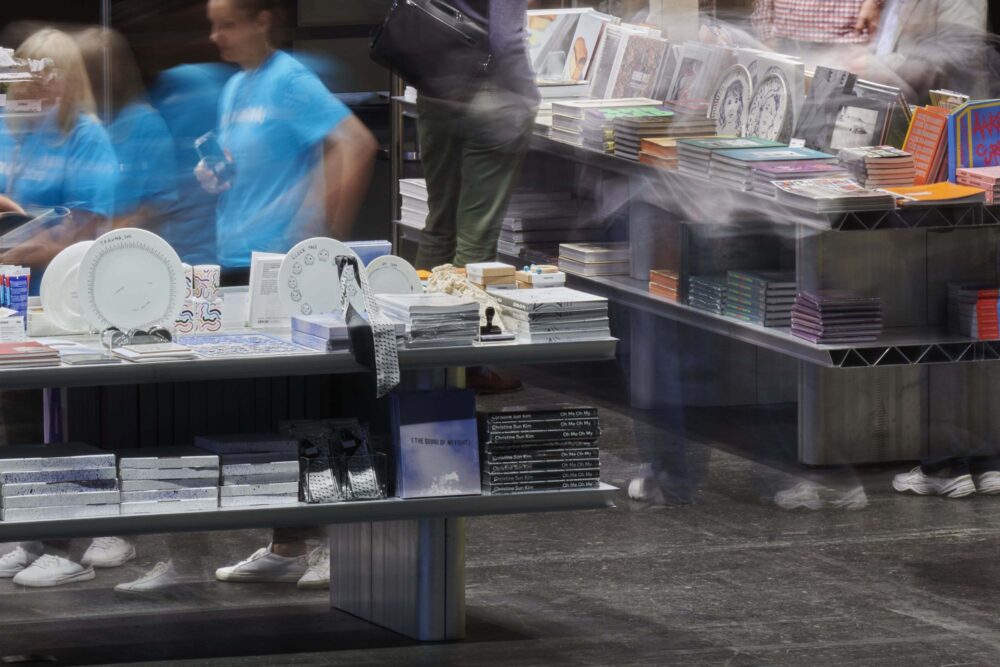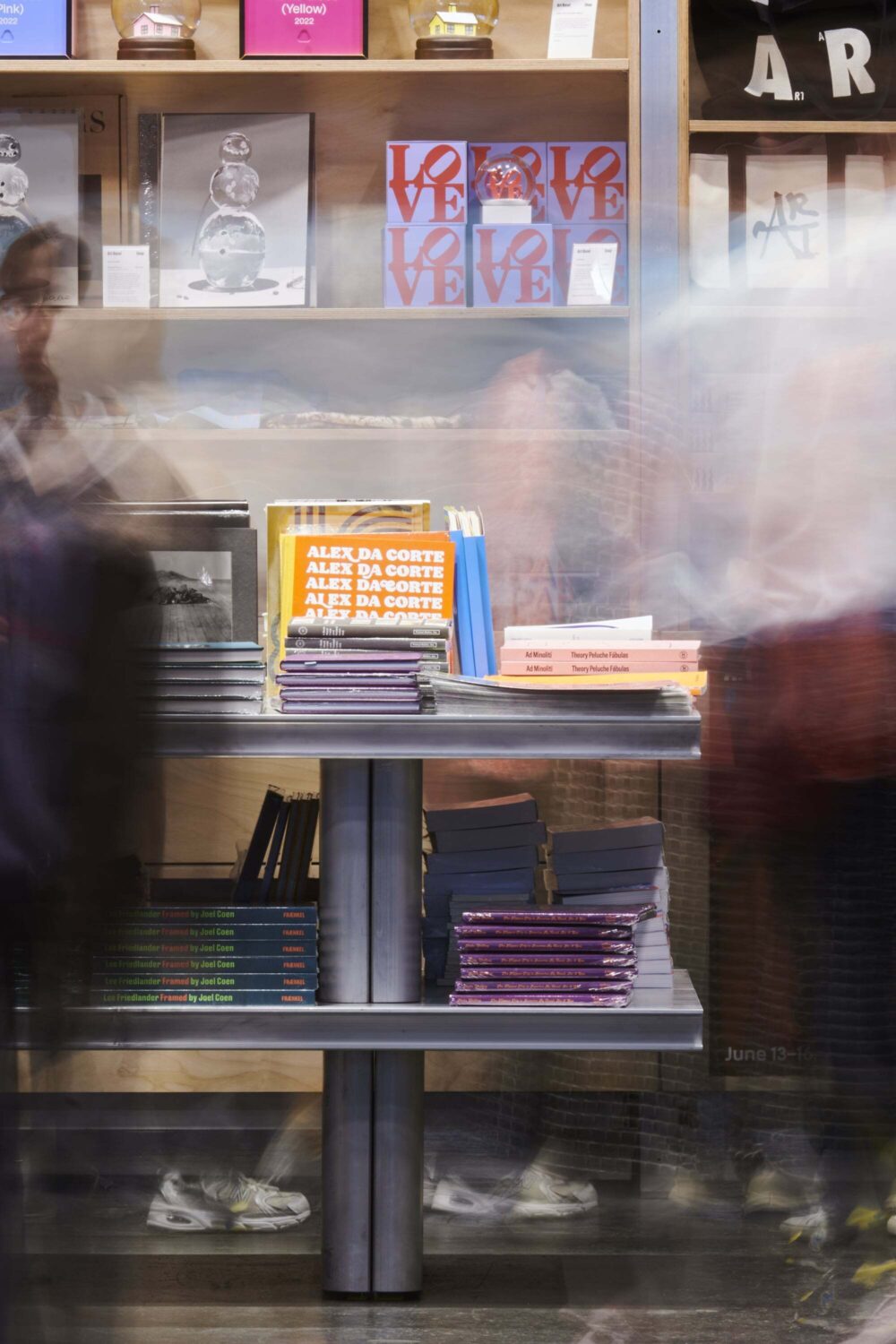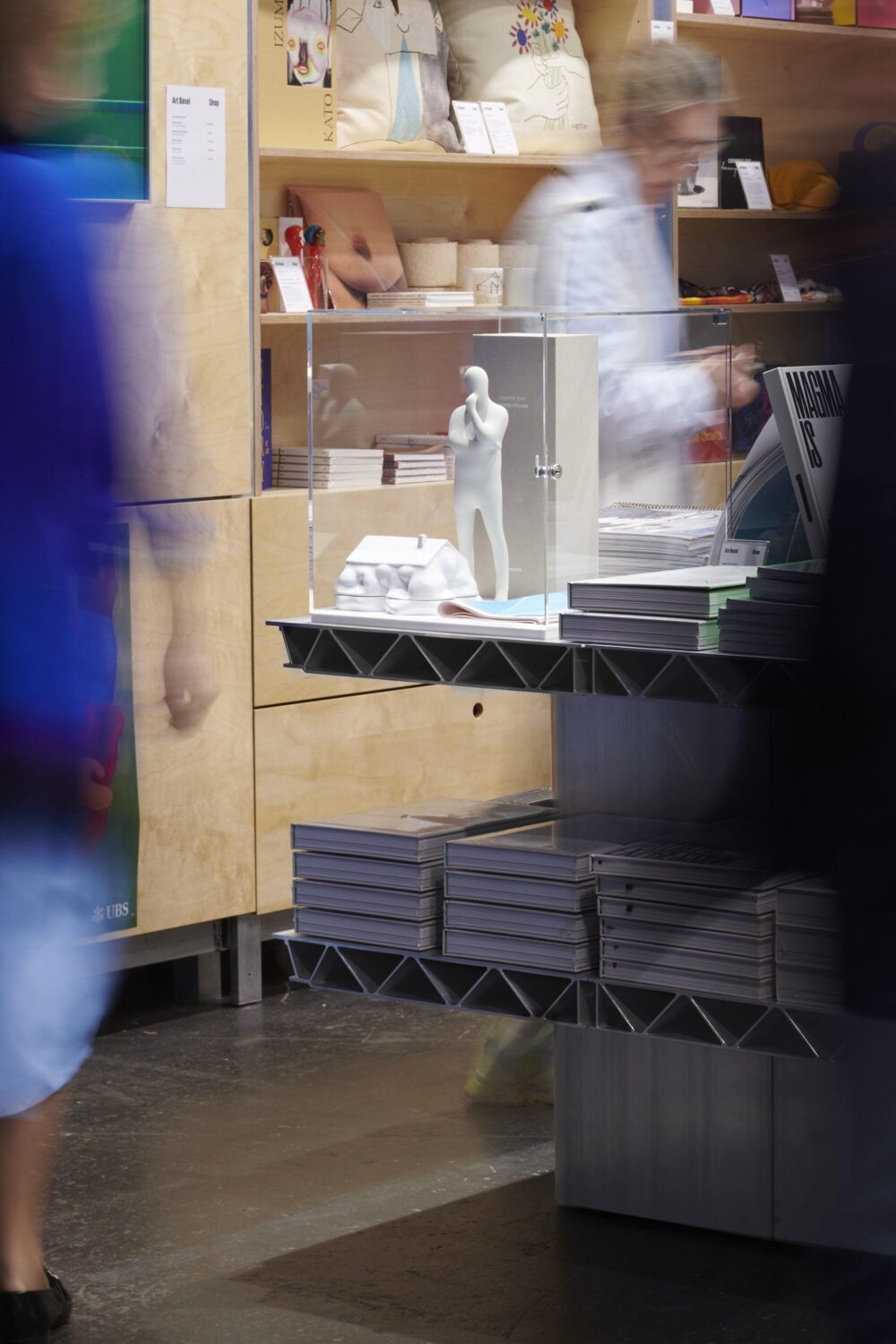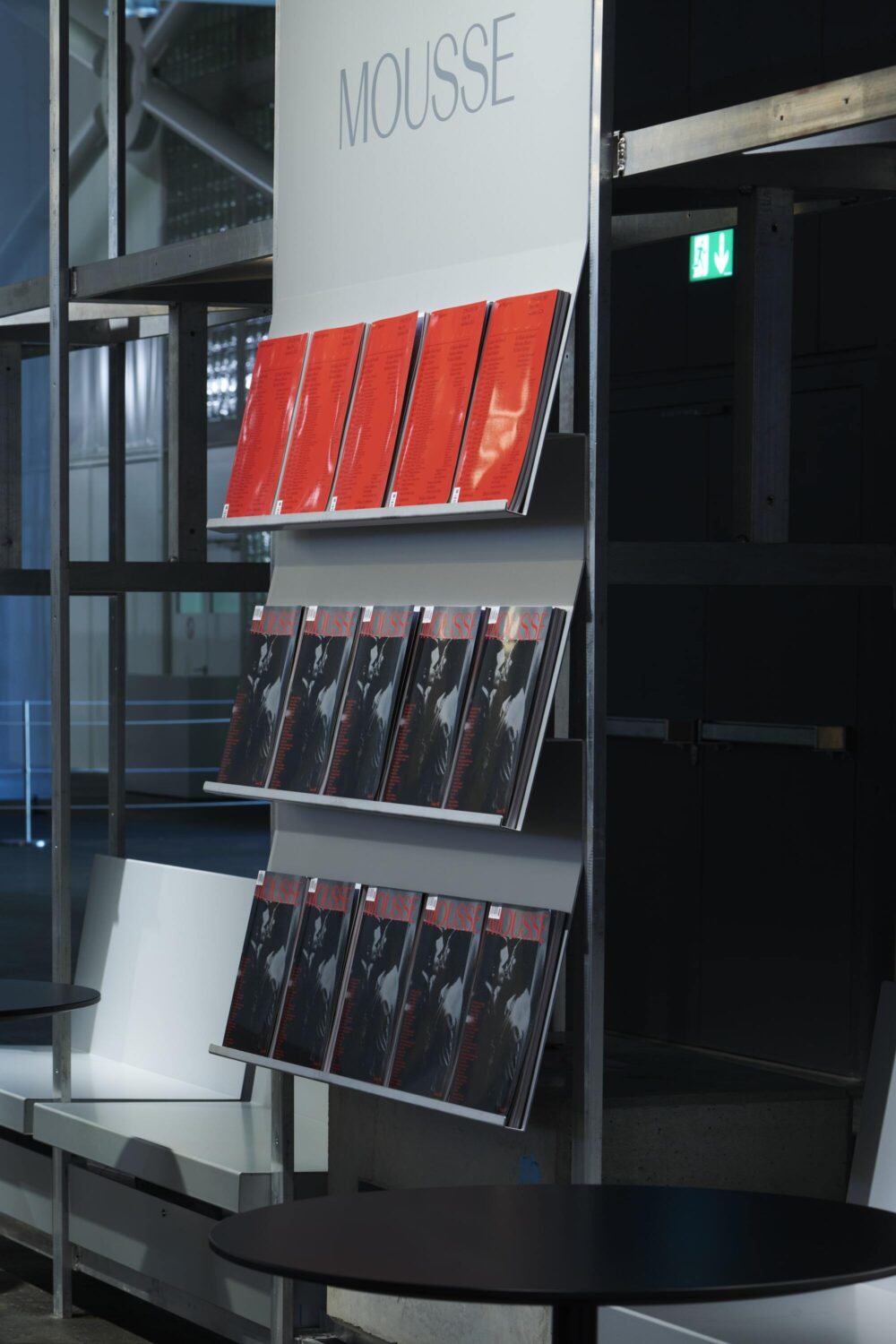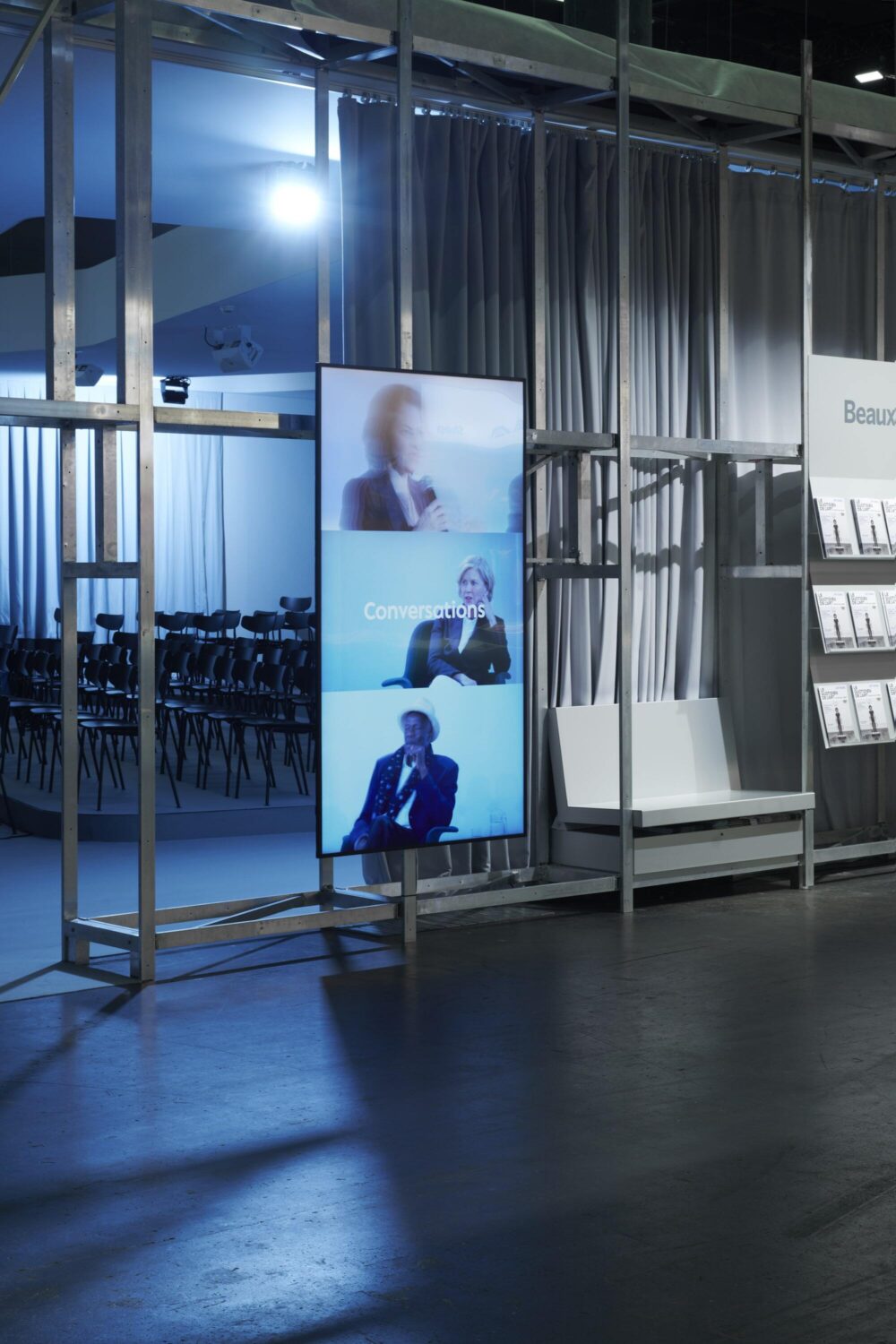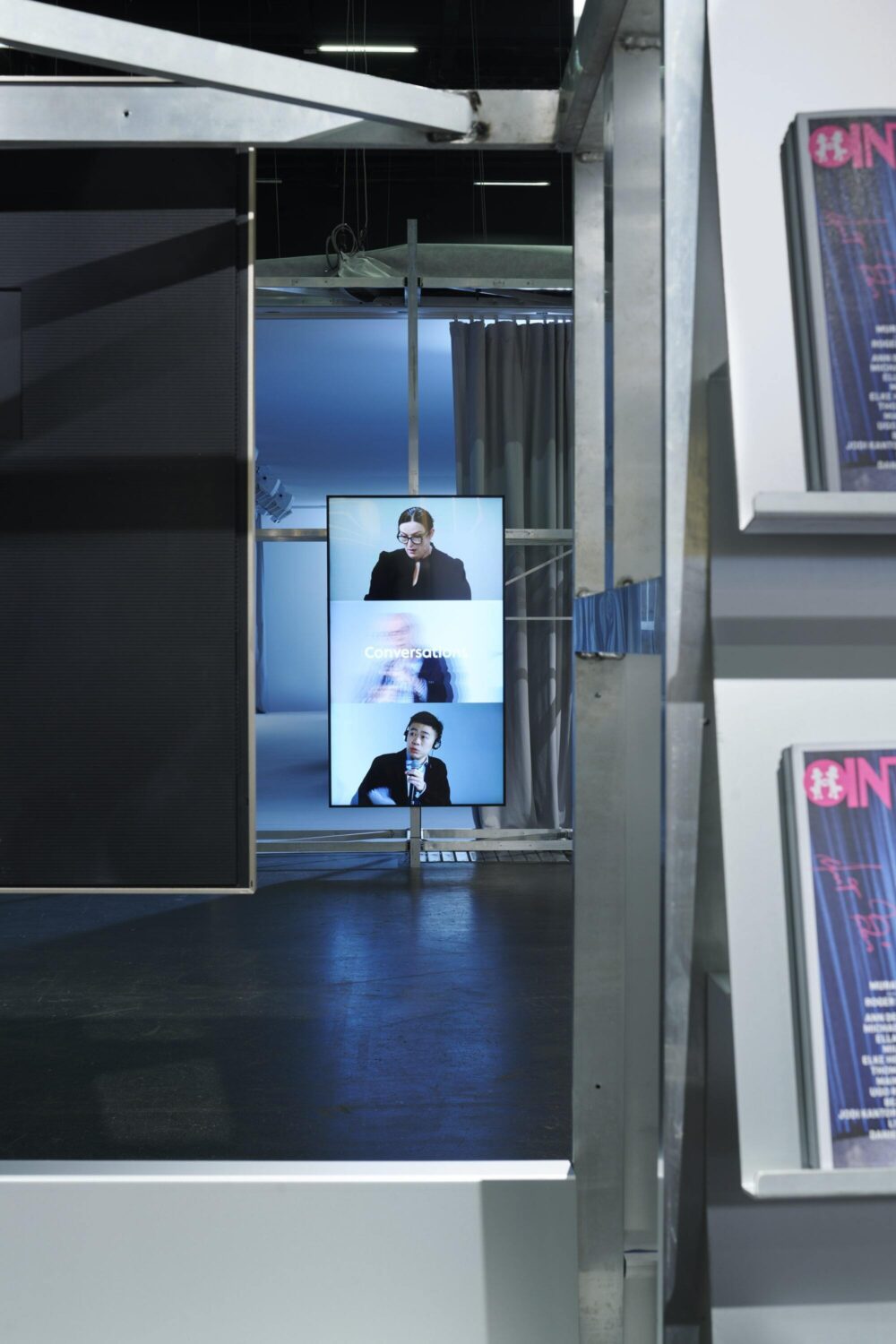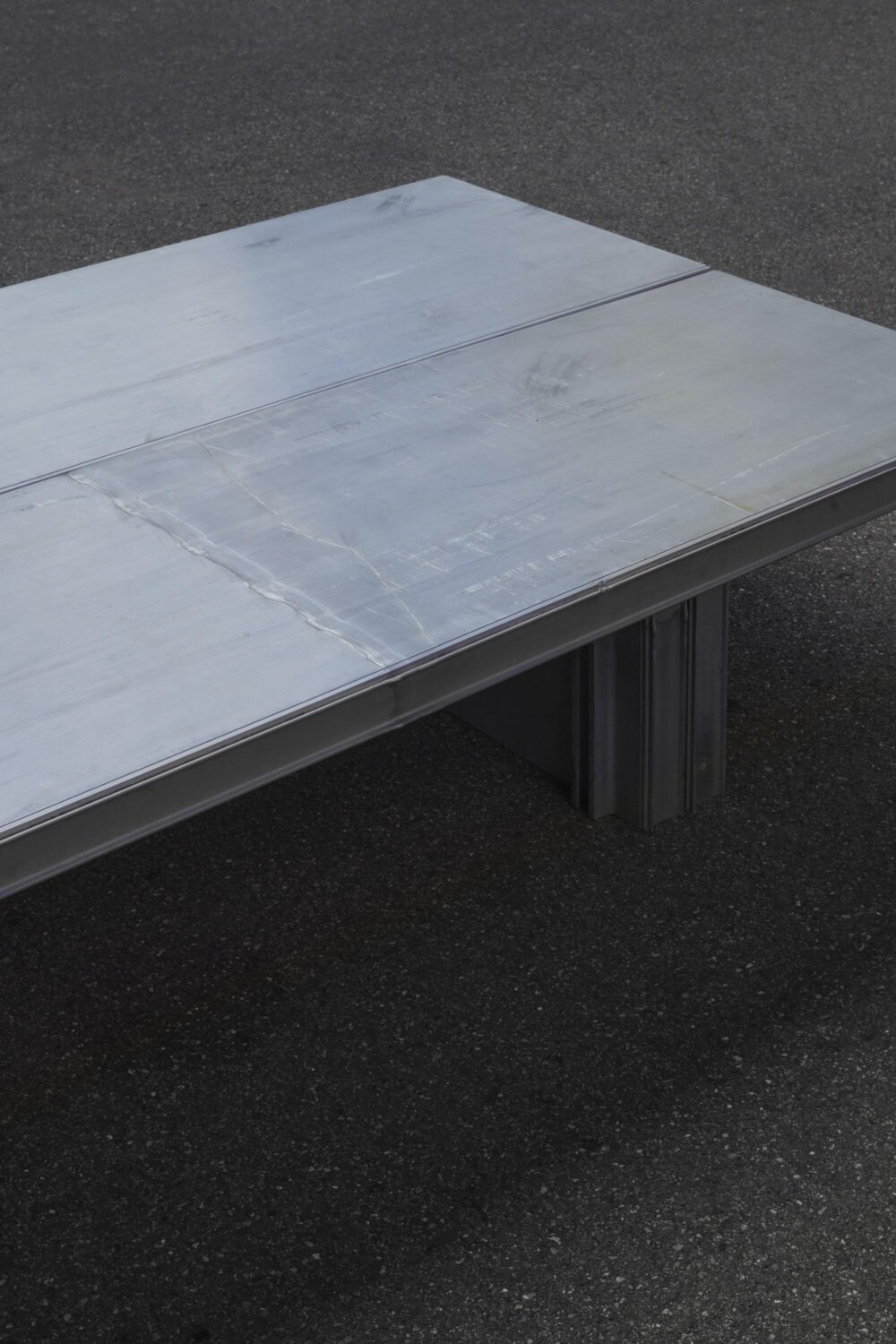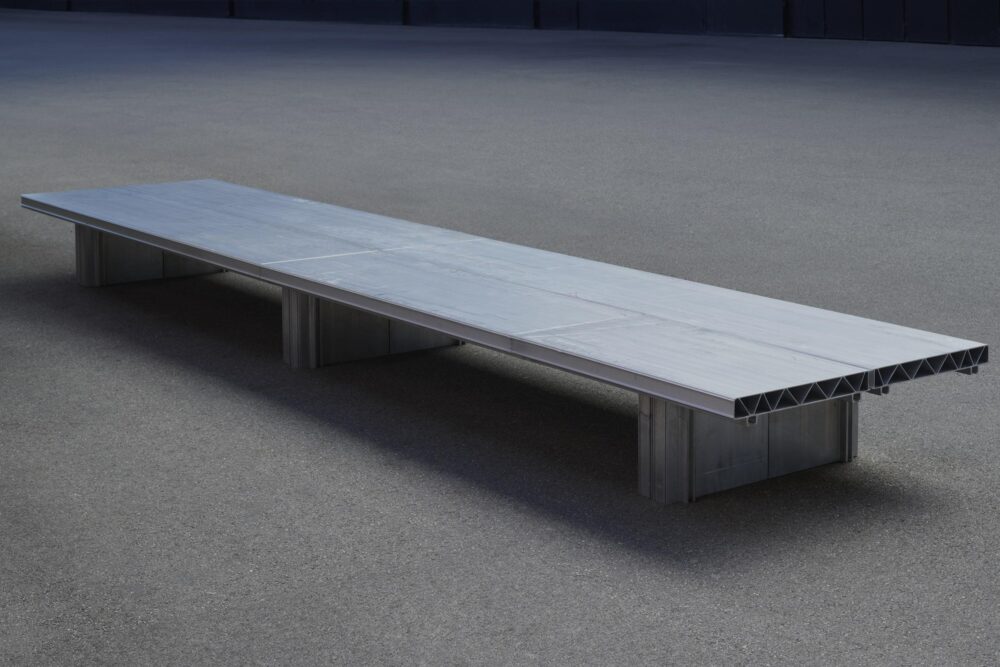Art Basel 2024
←For the 2024 edition of Art Basel, Studio Luiz Albisser in collaboration with Office Luis Bischoff present a collection of modular furniture made of repurposed materials combined with custom elements. The approach speaks to the event’s temporality by experimenting with new aesthetics of responsible material sourcing.
The brief was to critically rethink the public areas of the Unlimited exhibition space in Hall 1, and present for the first time a dedicated Art Basel Shop, along with the Magazines Sector, the Conversations Auditorium, a restaurant, a café, and lounge areas. Unlimited is Art Basel’s exhibition platform that provides space for large pieces and event-based works, where Albisser and Bischoff created a series of interconnecting areas that transition between different fair sectors and experiences. With subtle thresholds, the design encourages visitor fluidity and a deliberate yet spontaneous engagement with exhibited content. Embracing the existing stage topography, the Conversations Auditorium is open on two sides, inviting circulation and offering access to the café or talks from multiple angles, with multimedia displays active even outside scheduled events.
The layout is defined by a toolkit of flexible design elements, each with a distinct function. Shelving, display systems, mirrors, seating, lighting and signage are anchored in repurposed wall structures from Unlimited’s extensive inventory, transforming existing white walls into versatile devices with adaptable configurations. The self-standing elements go beyond mere partition walls; they become scenographic elements with varying levels of permeability, contributing to the perception of the public areas as a cohesive whole.
Recycled and recyclable modular furniture pieces populate the spaces, sparking conversations on the potentials of material circularity and reuse: “Our ongoing collaboration with Art Basel continually urges us to explore innovative and sustainable design approaches, especially within the context of temporary events,” states Luiz Albisser. He continues, “What elements can be borrowed or re-used? How can we minimize new production? These questions guide our quest for materials, considering available options from outside of the architecture industry. Within Basel’s harbor, where our office is based, we’re surrounded by a rich array of industrial elements, each with its unique scale and aesthetic. This environment prompted us to recontextualize certain objects and explore their potential as furniture.”

